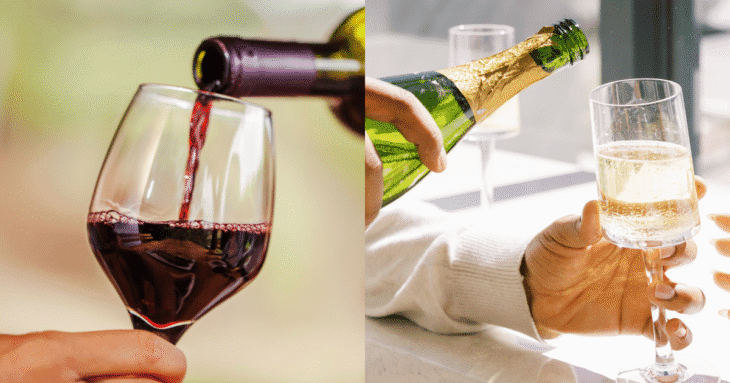What’s the Difference Between Wine and Champagne? (And Why It Matters)
Wine and Champagne. Two exquisite elixirs crafted from the humble grape, yet worlds apart in story, experience, and celebration. We often raise a glass without pausing to wonder: what makes that glass of bubbly so special, so ceremonious, so distinct from the still sip of a fine Bordeaux or Sonoma Chardonnay? As curators of moments that shimmer with history and heritage, we believe the answer is more than technical. It’s emotional. The key difference is that Champagne is a specific type of sparkling wine made exclusively in France’s Champagne region, using strict methods that set it apart from all other wines.
Whether you’re selecting a bottle for a casual dinner or for the kind of moment that deserves its own spotlight, understanding the nuance between wine and Champagne doesn’t just make you a better host—it deepens your appreciation of ritual, craftsmanship, and joy. Let’s uncork the difference.
Key Takeaways
- Champagne is a type of wine made only in France’s Champagne region using traditional methods.
- Wine can be still or sparkling, while Champagne is always sparkling with fine, persistent bubbles.
- The production process sets Champagne apart, requiring a second fermentation in the bottle.
- Champagne typically costs more due to strict regulations, aging time, and regional exclusivity.
- Wines vary widely by grape and origin, offering endless styles beyond what Champagne delivers.
What Is Wine?
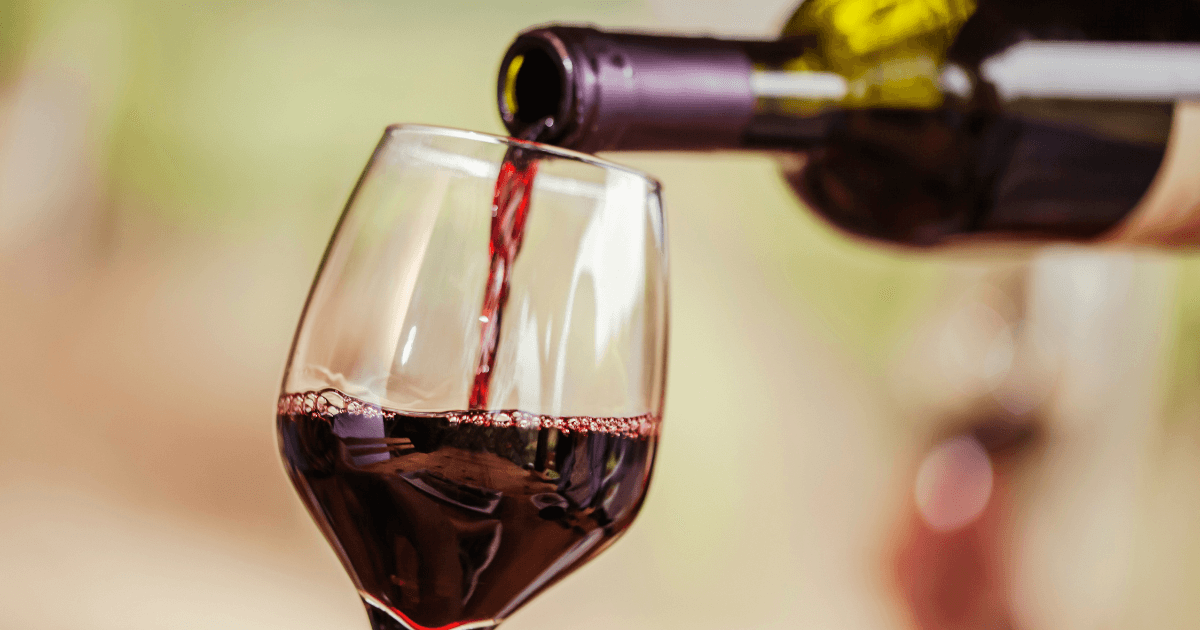
Wine, in its simplest form, is fermented grape juice. Some wines are also made from other fruits, but traditional wine is born from grapes. The type of grape, the soil it grows in, and how it’s transformed in the cellar all shape the story in your glass.
Wine can be still (no bubbles), sparkling (effervescent), or fortified (boosted with additional alcohol). It may whisper of orchard fruit, earth, or spice. It may be light and crisp or rich and brooding. In short, wine is endlessly expressive.
Different Types of Wine
There are five core categories of wine:
- Red: Bold, tannic, and often aged; think Cabernet Sauvignon or Pinot Noir.
- White: Bright, floral, or creamy; like Chardonnay, Riesling, or Sauvignon Blanc.
- Rosé: The sun-kissed middle ground between red and white.
- Sparkling: Fizzy and festive, though not all sparkling wines are Champagne.
- Fortified: Enhanced with spirits, such as Port or Sherry.
Each of these styles offers its own journey. A dry rosé on a summer afternoon feels worlds away from a deep Syrah enjoyed fireside in winter.
How Wine Is Made
From vine to bottle, wine undergoes a transformation:
- Harvesting ripe grapes at peak flavor
- Crushing and fermenting with natural or added yeast
- Aging in stainless steel, oak, or amphora
- Bottling for immediate enjoyment or further cellaring
Wine’s character is deeply tied to the choices made in the vineyard and winery—a dance of climate, timing, and intention.
What Is Champagne?
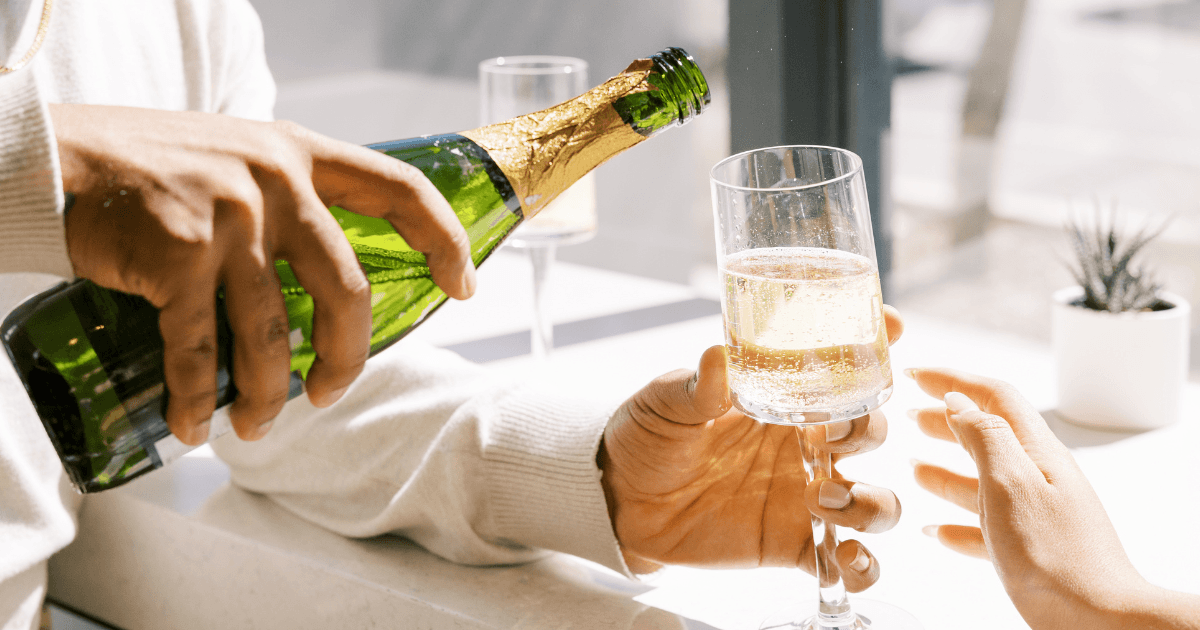
Champagne is a sparkling wine, yes—but only one made under strict rules, in a very specific place. It isn’t just a style; it’s a legacy.
All Champagne is sparkling wine, but not all sparkling wine can be called Champagne. Much like Parmesan must come from Parma, true Champagne hails only from the Champagne region of France.
Legally Protected Name
The term “Champagne” is legally protected by the Appellation d’Origine Contrôlée (AOC). That means:
- It must be made in Champagne, France
- It must use approved methods (more on that in a moment)
- It must include specific grapes: Chardonnay, Pinot Noir, or Pinot Meunier
This distinction matters. When you buy Champagne, you’re not just buying bubbles—you’re investing in a heritage steeped in centuries of tradition.
How Champagne Is Made (Méthode Champenoise)
The process behind Champagne is famously meticulous:
- Primary fermentation creates a base wine
- Secondary fermentation happens in the bottle—adding yeast and sugar (called “liqueur de tirage”)
- Aging on lees develops complex flavors
- Riddling rotates bottles slowly to collect sediment in the neck
- Disgorgement removes the sediment
- Dosage adjusts the sweetness before corking
This traditional method (Méthode Champenoise) is what gives Champagne its signature finesse, creaminess, and persistent bubbles.
Key Differences Between Wine and Champagne
| Feature | Wine | Champagne |
| Region | Global (France, Italy, USA, etc.) | Champagne region, France (AOC protected) |
| Fermentation | Single fermentation | Dual fermentation (bottle-aged) |
| Bubbles | Still or lightly sparkling | Highly carbonated, fine bubbles |
| Price Range | Broad (budget to luxury) | Generally premium and luxury-tier |
| Taste & Texture | Varies widely | Crisp, mineral-driven, refined mousse |
| Occasions | Daily meals, varied moments | Celebrations, milestones, ceremonial toasts |
Region and Origin
Champagne has terroir in its bones. The chalky soils of Reims and Épernay gift the wine a vibrant tension you won’t find elsewhere. Wine, by contrast, spans the globe—from the volcanic slopes of Sicily to the fog-kissed vineyards of Napa Valley. Each wine tells a story of place.
Production Method
The meticulous Méthode Champenoise sets Champagne apart. It’s aged longer, handled more delicately, and made with unrelenting precision. Still wine, while no less expressive, skips the second fermentation that brings effervescence to life.
Taste, Texture, and Bubbles
Champagne’s bubbles are not just a party trick. They’re ultra-fine, elegant, and persistent—a direct result of bottle aging. Still wines, whether rich and velvety or crisp and clean, simply speak another language.
Price and Prestige
Champagne often commands a higher price point, and with good reason. Between the production time, appellation control, and brand heritage, you’re sipping on craftsmanship. Still wines vary more widely in cost and accessibility.
Occasions and Pairings
Champagne is celebration in liquid form—for weddings, anniversaries, and new beginnings. It also pairs exquisitely with oysters, caviar, and even fried chicken (yes, really). Wine can be more relaxed, complementing pizza, pasta, or a contemplative evening alone.
What About Sparkling Wine?
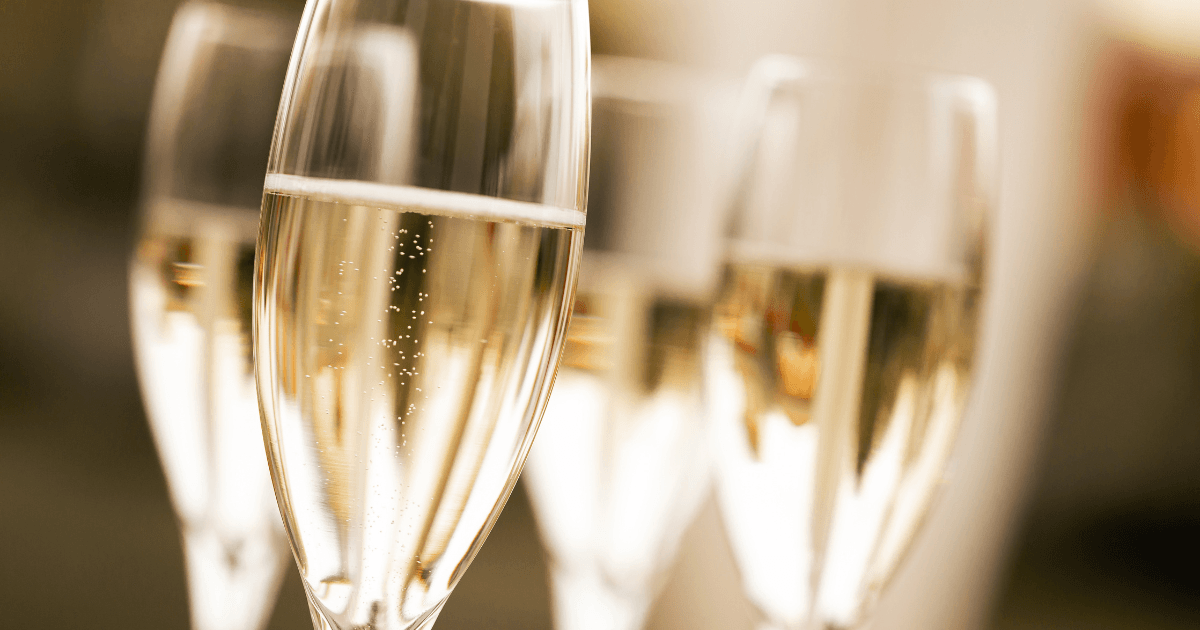
Is sparkling wine the same as champagne? No—and yes. Sparkling wine is a category; Champagne is a subcategory within it. Sparkling wines are made around the world, but few match the refinement of true Champagne.
Other Sparkling Wines Around the World
- Prosecco (Italy): Fresh, fruity, made using the Charmat method
- Cava (Spain): Aged like Champagne but more affordable
- Crémant (France): Champagne-like but from outside the region
- Sekt (Germany): Light and floral
- American Sparkling Wine: California, Oregon, and New York now produce world-class bottles
Key Differences in Production and Price
Charmat method (used in Prosecco) is faster and cheaper, producing larger, less refined bubbles. Champagne’s bottle fermentation and aging make it more nuanced—and more expensive.
Grape Varieties Used
Common Grapes in Wine
Still wine can be made from hundreds of grape varieties:
- Red: Cabernet Sauvignon, Merlot, Syrah, Pinot Noir
- White: Sauvignon Blanc, Riesling, Viognier, Chardonnay
Each brings unique aroma, structure, and soul.
Grapes Used in Champagne
Champagne focuses on three:
- Chardonnay: Elegant, citrusy, age-worthy
- Pinot Noir: Depth, red fruit, structure
- Pinot Meunier: Softness, floral notes
Together, they create harmony and complexity.
Is Champagne Healthier or Stronger Than Wine?
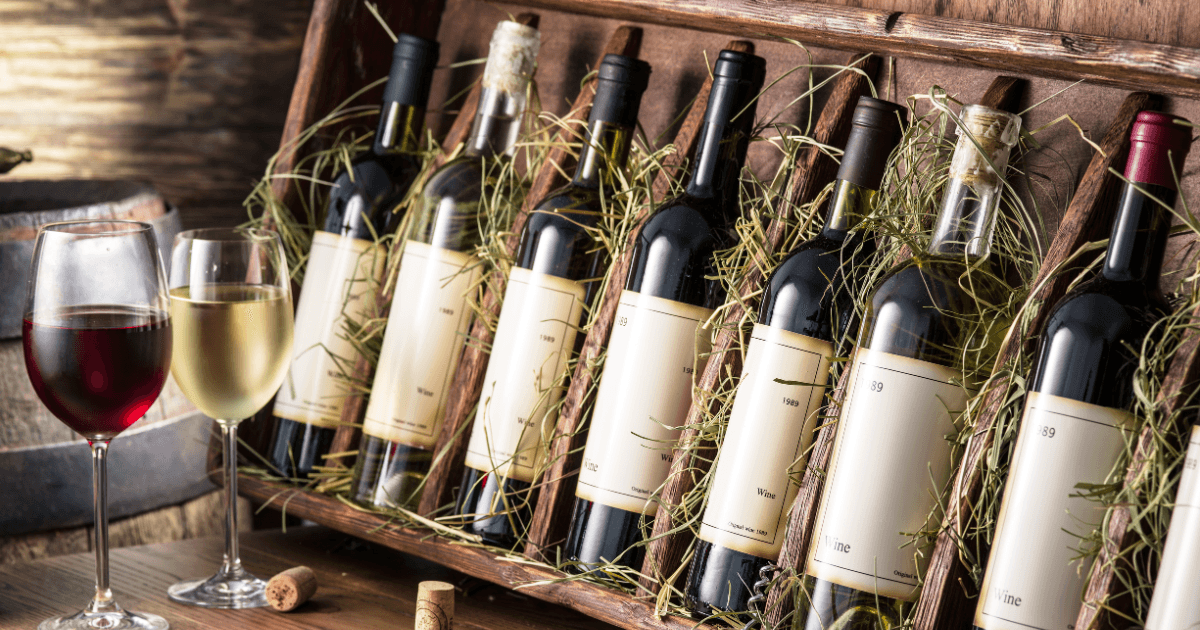
Alcohol Content
Champagne typically contains around 12% ABV, offering a balanced level of alcohol that enhances its crisp structure. In comparison, still wines can range broadly depending on style and region. Bold reds may climb as high as 14-15%, while lighter whites might rest comfortably under 11%.
Calories and Sugar
Dry Champagne (such as Brut) is often the leaner choice, with fewer calories and minimal residual sugar. Sweeter styles, including Doux or dessert wines, contain significantly more sugar and energy per serving. Knowing your style helps you balance indulgence with intent.
Buyer’s Guide: When to Choose Wine vs Champagne
Everyday Meals vs Celebrations
Choose wine for dinners, date nights, or quiet indulgence. Choose Champagne for grand entrances, anniversaries, or just because you believe Tuesday deserves to sparkle.
Budget-Friendly Alternatives to Champagne
Love the bubbles, but not the price? Try:
- Crémant (France)
- American sparkling wine (California, Oregon)
- Cava (Spain)
They offer great structure, often made in the same traditional method.
What to Look for on the Label
- Brut: Very dry
- Extra Dry: Slightly sweeter than Brut
- Vintage: Made from one exceptional year
- Non-Vintage (NV): Blend of years
- Blanc de Blancs: 100% Chardonnay
- Blanc de Noirs: 100% Pinot Noir or Meunier
These clues reveal what to expect in the glass.
Wine and Champagne Are Both Worth Celebrating
Wine and Champagne are not rivals. They are companions in your cellar, each offering a different kind of magic. Wine is storytelling in layers—regional, seasonal, soulful. Champagne is a toast to life, with bubbles that rise like memories to the surface. When you know the difference, you don’t just choose better. You celebrate better.
At California Champagne Sabers, we believe that opening a bottle—especially Champagne—should feel as ceremonial as the moment it honors. That’s why we create sabers worthy of your most unforgettable celebrations. Whether you’re pouring for one or a hundred, we’re here to help you slice into your next memory with elegance and flair.
